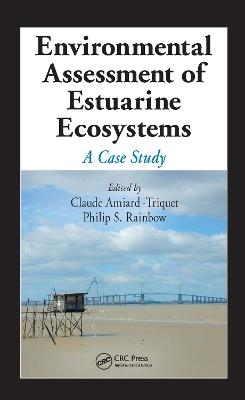
Environmental Assessment of Estuarine Ecosystems
Crc Press Inc (Verlag)
978-1-4200-6260-1 (ISBN)
Estuaries in every country exemplify the same paradox — they are among the most productive ecosystems and also among the most impacted by anthropogenic activities. And although estuarine biodiversity is key to the ecological and economic health of coastal regions, estuaries are exposed to toxic effluents transported by rivers from remote and nearby conurbations and industrial and agricultural concerns, putting them at risk. Increased attention to environmental issues highlights the fragility and importance of estuaries and brings to the forefront the need for an up-to-date assessment of techniques.
Environmental Assessment of Estuarine Ecosystems: A Case Study describes a comparative, multidisciplinary ecotoxicological study of two contrasting estuaries in France. Based on the results of this study, the book presents generalizations about how different techniques might be applied and interpreted in future, similar studies assessing the ecotoxicological status of these vital coastal systems. With contributions from international experts, this reference covers all aspects of estuaries from the physiological to the economical. It introduces the state-of-the-art science required to investigate ecotoxicological problems in many estuaries all over the world.
Although carefully focused on a specific region, this book covers a broad range of environmental issues and solutions, demonstrating how various pieces of information can be integrated into a sound assessment. Understanding the observations about this region and the techniques used for its assessment provide a benchmark for assessing, remediating, and applying new developments to other estuaries.
Claude Amiard-Triquet, Philip S. Rainbow
Introduction. Sedimentary Processes on Estuarine Mudflats: The Example of the Seine and the Authie Estuaries. Quantification of Contaminants. Biomarkers Based upon Biochemical Responses. Biogeochemistry of Metals in Sediments: Development of "Micro-Scale" Analytical Tools and the Use of Indicators of Biological Activities. Organic Contaminants in Coastal and Estuarine Foodwebs. Tolerance in Organisms Chronically Exposed to Estuarine Pollution. Linking Energy Metabolism, Reproduction, Abundance and Structure of Nereis diversicolor Populations. Historical Records of the Nereis diversicolor Population in the Seine Estuary. Ecological Status and Health of the Planktonic Copepod Eurytemora affinis in the Seine Estuary. From Pollution to Altered Fish Physiological Performance; The Case of Flatfish in the Seine Estuary. Diatoms. Foraminifera. Patterns of Abundance, Diversity and Genus Assemblage Structure of Meiofaunal Nematodes in the Seine (Pont de Normandie) and Authie (Authie Port) Estuaries. Dynamic Diagenetic Modelling and the Impact of Biota. Conclusions.
| Erscheint lt. Verlag | 17.2.2009 |
|---|---|
| Reihe/Serie | Environmental and Ecological Risk Assessment |
| Zusatzinfo | 38 Tables, black and white; 80 Illustrations, black and white |
| Verlagsort | Bosa Roca |
| Sprache | englisch |
| Maße | 156 x 234 mm |
| Gewicht | 1400 g |
| Themenwelt | Naturwissenschaften ► Biologie ► Ökologie / Naturschutz |
| Naturwissenschaften ► Geowissenschaften ► Geografie / Kartografie | |
| ISBN-10 | 1-4200-6260-3 / 1420062603 |
| ISBN-13 | 978-1-4200-6260-1 / 9781420062601 |
| Zustand | Neuware |
| Haben Sie eine Frage zum Produkt? |
aus dem Bereich


